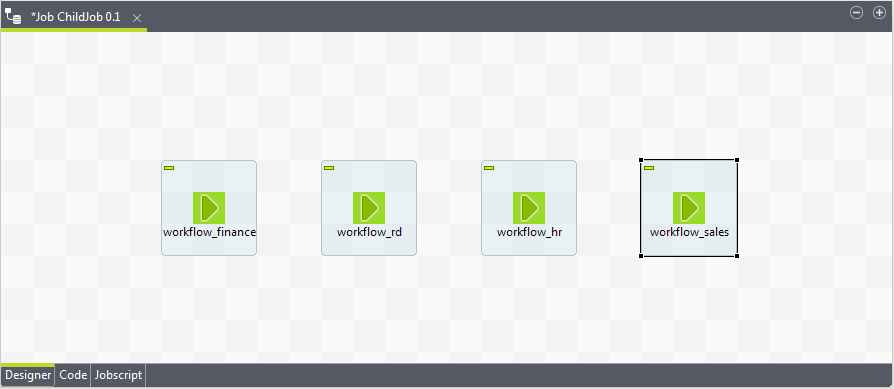Executing multiple subJobs in parallel
The Multi thread execution feature allows you to run multiple subJobs that are active in the workspace in parallel.
As explained in the previous sections, a Job opened in the workspace can contain several subJobs and you are able to arrange their execution order using the trigger links such as OnSubjobOK. However, when the subJobs do not have any dependencies between them, you might want to launch them at the same time. For example, the following image presents four subJobs within a Job and with no dependencies in between.

The tRunJob component is used in this example to call each subJob they represent.
Then with the Job opened in the workspace, you need simply proceed as follows to run the subJobs in parallel:
Procedure
Did this page help you?
If you find any issues with this page or its content – a typo, a missing step, or a technical error – let us know how we can improve!
